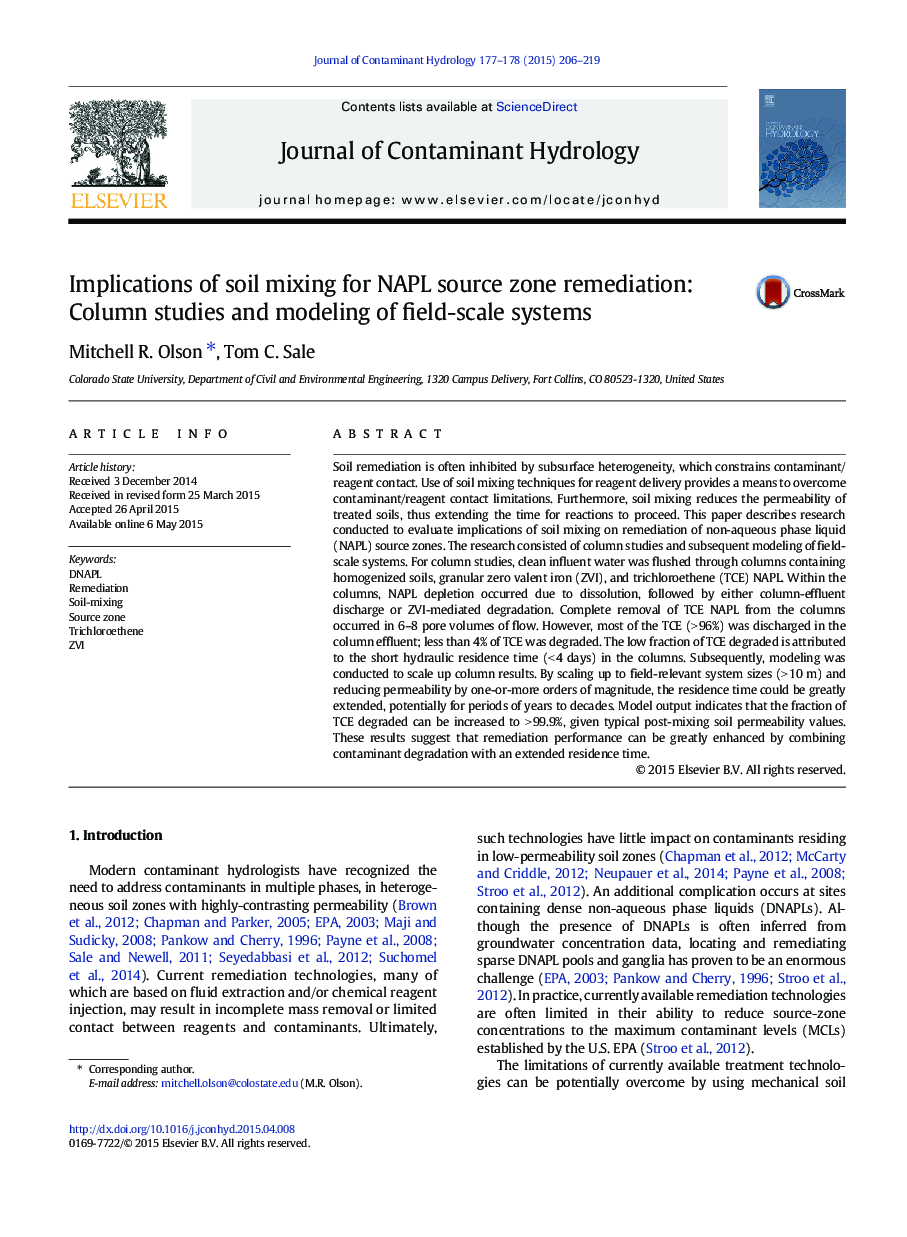| کد مقاله | کد نشریه | سال انتشار | مقاله انگلیسی | نسخه تمام متن |
|---|---|---|---|---|
| 4546449 | 1627032 | 2015 | 14 صفحه PDF | دانلود رایگان |

• ZVI/bentonite soil-mixing evaluated for chlorinated solvent source-zone remediation
• Soil mixing overcomes contaminant/reagent contact issues and reduces permeability.
• Lab column experiments: rapid NAPL depletion observed in mixed-soil system
• Modeling used to evaluate field-scale interaction of flow reduction and degradation
• At field scale, multiple order-of-magnitude reduction in flux and longevity predicted
Soil remediation is often inhibited by subsurface heterogeneity, which constrains contaminant/reagent contact. Use of soil mixing techniques for reagent delivery provides a means to overcome contaminant/reagent contact limitations. Furthermore, soil mixing reduces the permeability of treated soils, thus extending the time for reactions to proceed. This paper describes research conducted to evaluate implications of soil mixing on remediation of non-aqueous phase liquid (NAPL) source zones. The research consisted of column studies and subsequent modeling of field-scale systems. For column studies, clean influent water was flushed through columns containing homogenized soils, granular zero valent iron (ZVI), and trichloroethene (TCE) NAPL. Within the columns, NAPL depletion occurred due to dissolution, followed by either column-effluent discharge or ZVI-mediated degradation. Complete removal of TCE NAPL from the columns occurred in 6–8 pore volumes of flow. However, most of the TCE (> 96%) was discharged in the column effluent; less than 4% of TCE was degraded. The low fraction of TCE degraded is attributed to the short hydraulic residence time (< 4 days) in the columns. Subsequently, modeling was conducted to scale up column results. By scaling up to field-relevant system sizes (> 10 m) and reducing permeability by one-or-more orders of magnitude, the residence time could be greatly extended, potentially for periods of years to decades. Model output indicates that the fraction of TCE degraded can be increased to > 99.9%, given typical post-mixing soil permeability values. These results suggest that remediation performance can be greatly enhanced by combining contaminant degradation with an extended residence time.
Journal: Journal of Contaminant Hydrology - Volumes 177–178, June–July 2015, Pages 206–219